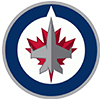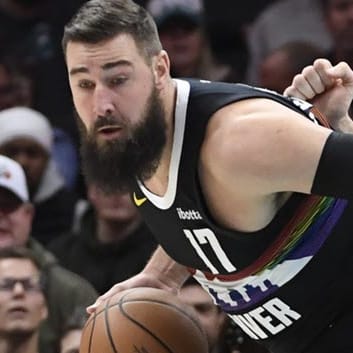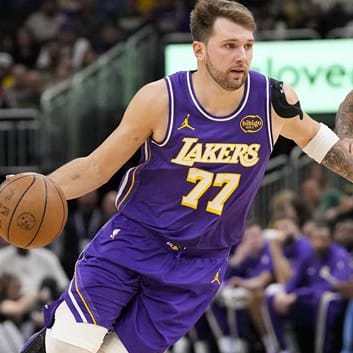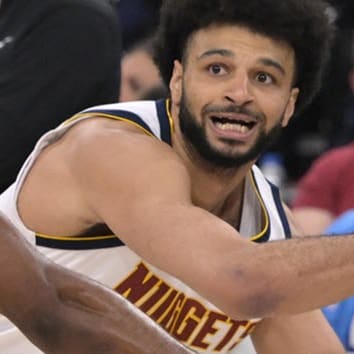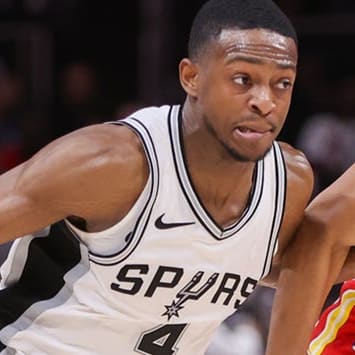The highly anticipated 2017 NBA Draft is behind us, which means it is time for fantasy prognosticators to start projecting.
This draft was one of the deepest in years, so it seems likely that more 19 and 20-year-olds will make a serious impact on the fantasy landscape than usual. Projecting these players is a difficult-yet-fun process, especially after a 2016 draft that produced only a handful of fantasy-viable rookies.
As you'll see in a moment, these are not your conventional rookie projections. Markelle Fultz and Lonzo Ball are not my top two rookies. Rookies are high-risk draft picks, and most seasons fantasy teams would be better off avoiding them.
In the post-lockout era, we've never had more than two rookies finish a season inside the top 70, and only two rookies have finished between 71 and 100 during that same period. Owning a rookie for the entire season is typically a bad idea. With that in mind, these ranking reflect the players whose opportunity, as well as their talent, puts them in the best position to help fantasy teams all season long.
All stat projections are:
A) Rough guidelines
B) My personal opinion, not RotoWire's official projections
C) Approximate -- yes, this is the same as point A, but I'm re-emphasizing it
D) I aim to be semi-conservative, but my main goal is to point out the categories where production should (or should not) be expected.
*These rankings are for 2017-18 only. These are not keeper rankings.
1. De'Aaron Fox, PG, Kings
When I wrote my pre-draft top-100, I explicitly called out the void at point guard in Sacramento. Whomever got that job belonged in the top-100, but the title had not yet been assigned. Not only is Fox now the clear starting point guard, but he was my second-favorite prospect entering this draft. Fox is one of the fastest players I've evaluated, and his relentless ability to slash to the hoop pairs perfectly with Buddy Hield's outside shooting. Fox should get a ton of minutes for the rebuilding Kings, who will want to give their potential star plenty of opportunity to grow.
Additionally, unlike the other players in the top five, the Kings don't care how many games they lose next season (unless they really are hell-bent on landing a post-prime vet). In college, Fox was a capable scorer, very good passer, and an above-average rebounder for his size. Somewhere between 12 and 16 points, five assists, three rebounds, one steal per game feels like a pretty comfortable, if not semi-conservative projection. Fox also gets a boost for shooting 47.8 percent from the field in college, though there are concerns about how is shaky jumpshot will translate.
2. Dennis Smith Jr., PG, Mavericks
Rick Carlisle doesn't exactly have a strong track record of integrating rookies, but the fact of the matter is he might not have much choice. While Seth Curry and J.J. Barea remain on the roster, Curry works best as a shooting guard, and Barea may be better suited for a bench role, given his age and injury history. Yogi Ferrell, a player far less-talented than Smith, averaged 11.3 points, 4.3 assists, and 1.7 threes in 29.1 minutes per game as the Mavericks' point guard last Spring. While Ferrell was a nice story for a couple months, he's not going to impede Smith's development.
If the Mavericks add a point guard in free agency, then Smith falls outside the top six, probably slotting in between Ntilikina and Markkanen. Otherwise, Smith should have a clear path to heavy minutes in a stable organization that should allow him to develop at his own pace.
3. Markelle Fultz, PG, 76ers
If you don't believe in Joel Embiid: healthy person, go ahead and bump Fultz up to second. I'm trying to stay optimistic about the GOAT of social media, so I'm writing this with the assumption Embiid plays more than 65 games. With Embiid healthy, the 76ers will be all sorts of fun, but Fultz will have a smaller role in the offense. The 76ers have three playmakers – Fultz, Ben Simmons, and Embiid. All three can score and pass, as well as create offense for themselves. Fultz is still likely to be the primary ball handler, but he'll score and assist less with Simmons and Embiid around.
Health-permitting, the 76ers could contend for a low-seed playoff berth this season, but they won't overwork any of the three cornerstones to get there. I'm projecting him for roughly 15-17 points, 4.5 assists, four rebounds, 1.5 threes, one steal, and just over half-a-block per game.
4. Lonzo Ball, PG, Lakers
Ball is the future of the Lakers. Brandon Ingram, previous "future of the Lakers" title-holder, averaged 28.8 minutes last season. In the 13 games following the All-Star break, Ingram averaged 36.6 minutes. And the Lakers just traded away D'Angelo Russell, in part to free up guard minutes for Ball (but mostly to shed one of the three worst contracts in the league). What I'm getting at is that the Lakers will give Ball a ton of minutes.
One reason I have Ball lower than most people: I don't think the Lakers will be terrible, so there is less "good player on a bad team" stat inflation. Ball is a smart player, a transcendent passer, and a much better three-point shooter than he's given credit for. I've got him at around 14 points, eight assists, five rebounds, and two threes per game. He'll add some defense – he averaged 1.8 steals and 0.8 blocks in college – but how he's used on that end will probably impact his steals-blocks split.
5. Ben Simmons, PG/PF/SF, 76ers
How will the 76ers use Simmons? He's built like a power forward, and will probably start the season with dual-forward eligibility. But he's as athletic as a guard, and is at his best when he can use his size and advanced vision as a ball-handler. During camp last summer, the 76ers were using him as a part-time point guard, and that was still the plan as recently as a week before the draft. However, the addition of Fultz is an obvious roadblock. So just how much time Simmons spends as a true primary ball-handler is impossible to predict. The most probable scenario is Simmons operating as the secondary ball-handler behind Fultz.
What we do know is the last time we saw Simmons in a game setting is his shot didn't have much range. With Fultz, Dario Saric, Robert Covington, and a likely free agent addition lining the perimeter, he'll have space to drive. Look for somewhere around 12-15 points, 6-8 rebounds, 3-4 assists, with virtually no threes, a decent number of turnovers, and a relatively poor free throw percentage on what could be a high volume of attempts. Simmons ranked fourth in the nation in free throw attempts in his lone season at LSU.
A note to readers: at this point in the rankings, we move to the players who should not be drafted outside of the very deepest of leagues. Please, unless you are in an 18-team league or are madly in love with Frank Ntilikina, don't draft these players in a re-draft league. Watch-list a few and add them in January if you must, but don't waste your draft pick.
6. Lauri Markkanen, PF, Bulls
I don't necessarily believe in Markkanen the player, but I do believe in minutes. The Bulls lack competent big men, and they just sent away their franchise cornerstone in exchange for a package centered around moving up to get Markkanen. The Arizona product should bring some value as a scorer and high-efficiency three-point shooter, but he underwhelmed as a rebounder in college and averaged less than one assist per game.
7. Josh Jackson, SF, Suns
His value will increase as the season goes on, but it's hard to see him as a regular on fantasy rosters before the All-Star break. With more established scorers and playmakers on the roster, much of the value Jackson brings as a rookie -- namely, defensive versatility -- won't be tangible when it comes to fantasy production.
8. Frank Ntilikina, PG, Knicks
Heading into free agency, the Knicks' second-best point guard is Chasson Randle. Unless they're seriously interested in trading for Ricky Rubio or signing someone like Jeff Teague, there will be lots of decent player on a bad team stats available for Ntilikina.
9. Malik Monk, SG, Hornets
He's more talented than most of the players on this list, but he's a bit undersized for an NBA two-guard and could face an adjustment period. However, the Hornets cleared out one veteran shooting guard, Marco Belinelli, in the Dwight Howard trade, so Monk won't exactly be buried on a depth chart that currently includes Nic Batum and an inconsistent Jeremy Lamb.
10. John Collins, PF, Hawks
With Paul Millsap likely on the way out, the Hawks' big man core looks weak, and a rebuild could very well be on the horizon. At this point in the rankings, opportunity is everything, and Collins has a relatively clear path to minutes if the Hawks don't bring in a veteran replacement for Millsap.
11. Donovan Mitchell, G, Jazz
I really like both Donovan Mitchell (13th pick) and Nigel Williams-Goss (55th). While Mitchell is the more obvious candidate, I'm postponing judgment on which player is in line for the most minutes, since I don't think it's as obvious as the pick order implies. The Jazz traded up for Mitchell, but I am heavy-duty-narcotics high on Williams-Goss. The Jazz backcourt could undergo a major overhaul, Gordon Hayward, George Hill, and Joe Ingles all might leave in free agency.
12. Justin Jackson, G/F, Kings
The Kings passed on reuniting Fox and Monk at No. 10, instead trading back and picking up Jackson five spots later. He doesn't have nearly the upside of Monk, but Jackson is among the most NBA-ready players in the draft and should be an immediate contributor for a team that will completely re-tool its wing depth this offseason.
13. Frank Jackson, PG, Pelicans
New Orleans traded up to grab Jackson at the top of Round 2, and as of now he could slide into the backup point guard spot. The Pelicans will do all they can to retain Jrue Holiday, but even if Holiday leaves, they'll work to find a replacement with the vacated cap space, so the chances that Jackson becomes more than a minor bench piece in Year 1 are slim.
14. Jarrett Allen, C, Nets
Like Jackson (and most rookies), Allen is more likely to be useful after the All-Star break, once he's gained some experience and is getting more minutes. The Texas product is raw on both ends but will have more leeway and opportunity in Brooklyn than he would have anywhere else.
15. T.J. Leaf, PF, Pacers
The Pacers will be bad. Maybe they give their rookie some minutes to see what he can do? If you call Thaddeus Young a small forward, you could keep a straight face while arguing Leaf is their best power forward option. (Paul George is already gone and he's not coming back.)
*Editor's Note: We didn't forget about Jayson Tatum. While Tatum is a top three or four talent in this class, the Celtics' roster is already flush with depth on the wing, which will prevent the No. 3 pick from stepping into a significant role in Year 1. The caveat, of course, is that Boston's roster could look quite a bit different come October.
In the event that the Celtics part with Tatum as part of a deal for an established star (highly unlikely), his value would almost certainly increase, perhaps dramatically. If Tatum remains in Boston, but the Celtics trade Jaylen Brown or Jae Crowder (slightly less unlikely), he could also see a bump, though if Paul George is the hypothetical trade target, then Tatum's value would be relatively unaffected.
Perhaps the worst-case scenario for Tatum's immediate fantasy utility would be Boston keeping most of its current roster intact and adding Gordon Hayward as a free agent. In that situation, even with Jonas Jerebko and Kelly Olynyk out of the picture, Tatum would have an immensely difficult time achieving relevance in any non-dynasty leagues.





















